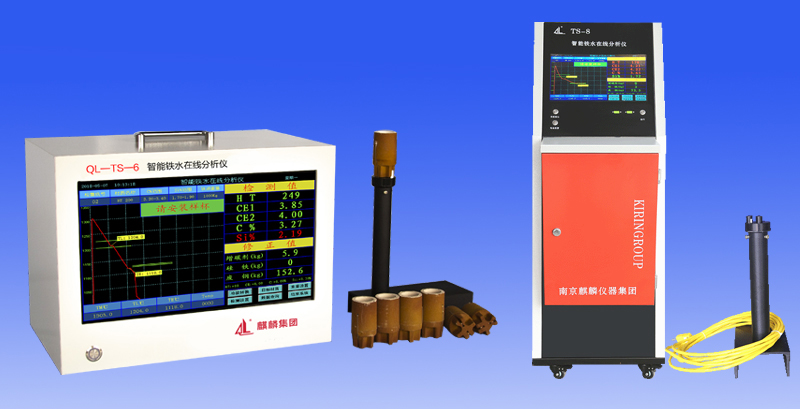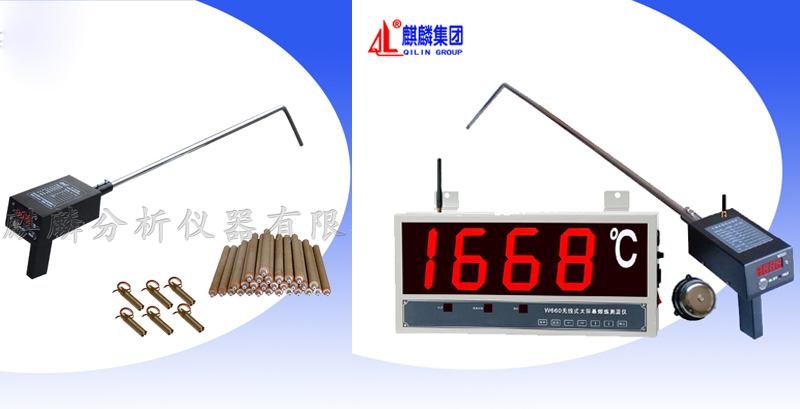Production of nodular cast iron with steel scrap and carbonizer - cupola smelting molten iron
Production of nodular cast iron with steel scrap and carbonizer - cupola smelting molten iron Nanjing Kirin Scientific Instrument Group Co., Ltd. and everyone to share the "iron-smelting smelting iron produced by scrap steel plus carbonizer". This paper mainly introduces the use of scrap steel and carbonizer to study the actual process, optimize the operating procedures, adjust the alloy composition, reasonable baking process and spheroidizing treatment, produce qualified ductile iron castings, reduce the production cost, the author based on many years of Production experience, the process is summarized for peer reference. Affected by factors such as rising coke prices, environmental protection and the increasing demand for castings, electric furnaces have replaced cupolas in many places. Moreover, due to the rising price of pig iron, scrap steel has a large amount of deposits in the society and the price is low. Therefore, in recent years, the use of scrap steel and carbonizers has been widely used to produce ductile iron and gray iron. If the process is operated correctly, not only can the overall physical properties of the casting be improved, but also the production cost can be reduced. Using electric furnace to smelt scrap steel and adding carbonizer to produce cast iron parts, although the electric furnace facilitates the adjustment of chemical element content, and the main elements can be adjusted to the requirements of the material, if the effective treatment is not taken, the quality of the casting is produced. There is a big difference in the quality of the castings produced with the cupola. The main difference is that the molten iron melted in the electric furnace, whether it is scrap steel plus carbonizer or iron scrap as the charge, produces a white mouth with a large tendency, high hardness and difficult finishing. This article talks about your own experience and understanding. 1. Differences in the quality of molten iron from cupola and electric furnace The cupola is made of coke as fuel. After the iron and other materials of the solid are preheated, melted, superheated and reduced, the molten iron flows into the front hearth through the bottom of the furnace. The time it takes is very short, about 10 minutes, iron. The liquid tends to stay in the forehearth for a period of time, during which the addition of the molten metal is advantageous. Although the temperature of the cupola is generally around 1450 °C, the temperature of the furnace is about 1700 °C at the moment of passing through the superheating zone. Although the time of passing the molten iron through the superheating zone is short, it is passed by fine droplets, which can get high temperature. Overheating helps the graphite to dissolve in the molten iron and eliminates the heritability of the coarse graphite sheets in the new iron. The main elemental carbon in cast iron has a process of burning and absorbing during the smelting process. Since the iron droplets are on the hot coke, the iron liquid absorbs the carbon atoms in the coke, so during the entire melting process, The absorption of carbon is greater than the burning loss, and the final carbon content is increased. The same iron will also absorb some of the sulfur from the coke. Spheroidizing in a ball sizing agent Before the spheroidizing agent is spheroidized, it must be ironed. Because the melting speed of the cupola is fast, when the ball is poured, when the next package is processed, the temperature inside the bag is still high, and the molten iron is poured into the ladle to reduce the temperature, so when the spheroidizing treatment is performed, the temperature of the tapping is The electric furnace can be slightly lower, and has little or no effect on the quality of the spheroidizing treatment (melting and absorption of the spheroidizing agent, pouring temperature). Melting the molten iron in an electric furnace, the melting interval of each furnace is about 50-60 minutes, sometimes the interval time may be longer, the ladle heat dissipation time is long, the temperature inside the package is low, and after the spheroidizing treatment, the temperature of the molten iron in the package is about to decrease. At 80 ° C, the temperature may drop more in winter, so when the iron is treated with an electric furnace to melt the iron, the temperature of the furnace is higher than that of the cupola. Second, the effect of smelting molten iron on the material properties We know that the electric furnace is used to smelt the charge, which is generated by the induction coil to generate a magnetic field, which generates eddy currents in the charge, and the eddy current heats up to melt the charge. Impact on "spontaneous crystal nucleus" The melting point of scrap steel is higher than that of cast iron, and the melting point of the recarburizer is higher. When the scrap is melted and melted, the recarburizer is slowly dissolved and diffused by heating, and the carbon in the recarburizer can be absorbed by the molten steel. The molten steel gradually turns into molten iron, which is often referred to as "synthetic cast iron." Due to the high melting temperature of the scrap steel, the superheat temperature after the molten steel turns into molten iron tends to be high. At high temperatures, the carbon in the molten iron is easily oxidized to CO, so it is considered that carbon in the molten iron is also a "gas forming element". CO has little solubility in molten iron and is released into the atmosphere adjacent to the liquid surface after formation. In the production practice, we will find that when the high-temperature molten steel is poured into the lifting bag, there is a radial spark flying out in the lifting bag (commonly known as thief flower), which may be the carbon release phenomenon of high temperature oxidation. The electric furnace has the characteristics of electromagnetic stirring friction during the process of melting the molten iron. The molten iron has a high superheating temperature, a long overheating time, and an induced friction of the induced current. The fine crystalline graphite in the molten iron, that is, the spontaneous crystal nucleus and the foreign crystalline core, will gradually dissolve in the molten iron and disappear; or the floating liquid surface It is picked up with the slag-packing agent and is picked out of the furnace. Thus, the substance which can be used as a foreign nucleus of graphite in the eutectic crystal can be greatly reduced. Sulfur is a harmful element in cast iron, especially in ductile iron. However, there is information that says 1: When the sulfur content is less than 0.06%, some beneficial effects of sulfur cannot be exerted. There are fine and dispersed sulfide inclusions in the cast iron, which can play an active and beneficial role in the nucleation and growth of graphite. Synthetic cast iron in which the scrap steel and the recarburizer are smelted by an induction furnace, the final sulfur content generally does not exceed 0.03%. If the sulphur content of the original molten iron is too low, the magnesium in the spheroidizing agent will not be combined with the vulcanization. The excessive residual magnesium amount not only hinders the graphitization, but also causes casting defects such as shrinkage cavities and pores in the casting. If the amount of spheroidizing agent is reduced, comprehensive consideration may affect the spheroidization rate. In the induction electric furnace, the core of graphitization in molten iron is greatly reduced due to factors such as low sulfur content, high superheat temperature and friction stir of electric current. 2 This kind of molten iron lacking the graphitized crystal core has a very low degree of subcooling and has a very poor response to the inoculation treatment. It is difficult to make the cast iron have the required microstructure through conventional inoculation treatment measures. Therefore, even if the chemical composition content completely meets the requirements, the cast castings tend to have high hardness and are not convenient for machining. There is information: sulfur increased from 0.02% to 0.06%, tensile strength increased by more than 50MPa, you can increase a brand or more, the hardness value can increase HB20. Further increase of sulfur to 0.1%, the strength value and hardness value change little, it can be seen that in gray cast iron, sulfur control is suitable in 0.06-0.1% (the brake drum of our factory is made of HT250, the sulfur is controlled in 0.07-0.09%) By the way, I also talk about melting "cast iron chips" in an electric furnace. Even if the molten iron chips are clean and free of rust, high temperature is not required, and the superheat temperature is not very high, but the friction due to electromagnetic stirring and the burning of carbon and silicon Loss, if the element is not blended before casting and effective inoculation measures are taken, the castings produced are also high in hardness. Effect of smelting in electric furnace on improving the quality of material Induction furnace melting, hot metal temperature can be raised to above 1570 ° C, and can be kept at high temperature for a long time, at this temperature, can bring impurities into the raw materials, as well as slag and inclusions formed during the melting process The object floats up to the surface of the molten iron. For scrap steel + recarburizer, especially particle steel + scrap + carbonizer + recycled material, whether it is scrap steel, particle steel or particle iron, most of them are white mouth tissue, white mouth tissue has strong heritability, In order to eliminate the hereditary nature, it is necessary to appropriately increase the melting temperature and increase the holding time to be able to purify the molten iron and reduce the defects of the casting. The burning loss of alloying elements is low, and the burning loss of manganese and silicon in molten iron is lower than that of cupola melting. It facilitates the regulation of various elements and stabilizes the chemical content. When producing ductile iron, too high sulfur content will directly affect the quality of ductile iron. Such as low spheroidization grade, poor material toughness, and casting defects such as slag inclusions. There is no sulfur-increasing reaction when the cast iron is smelted in an electric furnace. Synthetic cast iron is produced by scrap steel + recarburizer. Due to the low inclusion content of scrap steel and stable composition, the addition of carbonizer after high temperature melting eliminates the inheritance of the charge, the purity of the molten iron is improved, and the recarburizer has The effect of inoculation promotes the effect of graphitization to be more stable and prominent, and the matrix microstructure of the casting will be more uniform and refined, so the toughness and strength of the cast material are improved. Supporting furnace hot metal rapid testing equipment Nanjing Qilin Scientific Instrument Group Co., Ltd. Testing Center May 10, 2019
VLF1530GA Enclosed Fiber Laser Cutting Machine
Safety and No Pollution
With German Atlanta rack,
Japanese Yaskawa motor
German Neugart reducer.
With a fully enclosed design;
The observation window adopts an European CE Standard laser protective glass;
The smoke produced by cutting can be filtrated inside, it's non-polluting and environmentally friendly;
The weight of machine is 7500kg.
Whole Cover Laser Cutting Machine Laser Cutting Machine,Whole Cover Laser Cutting Machine,Cnc Metal Laser Cutter,Sheet Metal Fiber Laser Cutting Machine Jinan Vmade CNC Machine Co.,Ltd , https://www.vmadecnc.com

